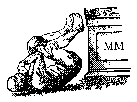
Ultra Testing
How klutzes are valuable to engineering
Ten tons of foresight (assuming you can measure foresight in such units) is no match for 160 pounds of klutz. Well-engineered products must withstand the unintentioned slings and arrows, the unforeseen slips and stumbles, the accidental kicks and elbows, and the regretfully overturned coffee cups that only a first-class professional klutz can deliver. The best engineering shops are now scrambling to take advantage of this goofily wonderful principle.
A good klutz can reveal the Achilles heel, the Achilles shin, and the Achilles funny bone in any design that's short of absolute perfection. Any designer can benefit by submitting every prototype to the rigors of our buffoonish brethren. Human nature being what it is, though, many designers still look down on this absurdly powerful technique. It's a sad fact that for every superklutz born to the human race, there are 100 pompously overconfident designers.
Three years ago, the US Department of Labor officially sanctified this as a distinct profession, giving it the name "ultra testing." Ultra testing is almost entirely an art, virtually not at all a science. There are no military specs for how to do ultra testing. There are no universities or trade schools that grant degrees or certificates of, er, merit in this field.
There is, however, one firm that has come to dominate the profession. This humble company has a near-monopoly in recruiting ultra testers, and in supplying them to corporations that manufacture furniture, consumer appliances, small machinery and, needless to say, glassware. This is now big business. UltraBang Associates, with offices in thirty-one states and more than forty foreign countries, last year took in revenues in excess of $43 billion.
Like the IBM computers of old, UltraBang ultra testers are not for purchase, only for hire. They are intensely loyal to their company, and they are not without a sense of humor about themselves. They dress, always, in black and blue. Indeed, many of UltraBang's customers, with a nod to the past, affectionately refer to the company as "Big Black and Blue."
UltraBang has virtually cornered the market on mechanical ineptitude. UltraBang's testers have the hard-to-define, impossible-to-measure talent of being accidents waiting to happen. Filing cabinets fall on them. Ceilings fall on their heads. Steering wheels fall off. Seats shatter. Watches run backwards. Cookies crumble. Steel-reinforced concrete is putty in their hands.
The basic notion of ultra testing is not new. It is at least as ancient as the phrase "fool proof." We have historical accounts from as far back as the time of Daedalus, whose son Icarus is a shining symbol of just how high one can go in the profession.
Ultra testing is also a social boon. As the profession gains cachet, the Help Wanted pages are at last becoming places of hope and cheer for the inept in-laws of the world. These uniquely blessed individuals are now being beckoned, courted and enriched by designers on every continent. Their special skills, their godsent gifts of destruction, are much celebrated.
Happy and wealthy, then, is the engineer who savors the ultra tester's motto, which was written some 80 years ago by the klutzy poet Yeats: "Things Fall Apart."
© Copyright 1998, 2001 Marc Abrahams
This article is adapted from the regular column Marc used
to write for Design News magazine. For a complete list of HotAIR
features, see What's New.